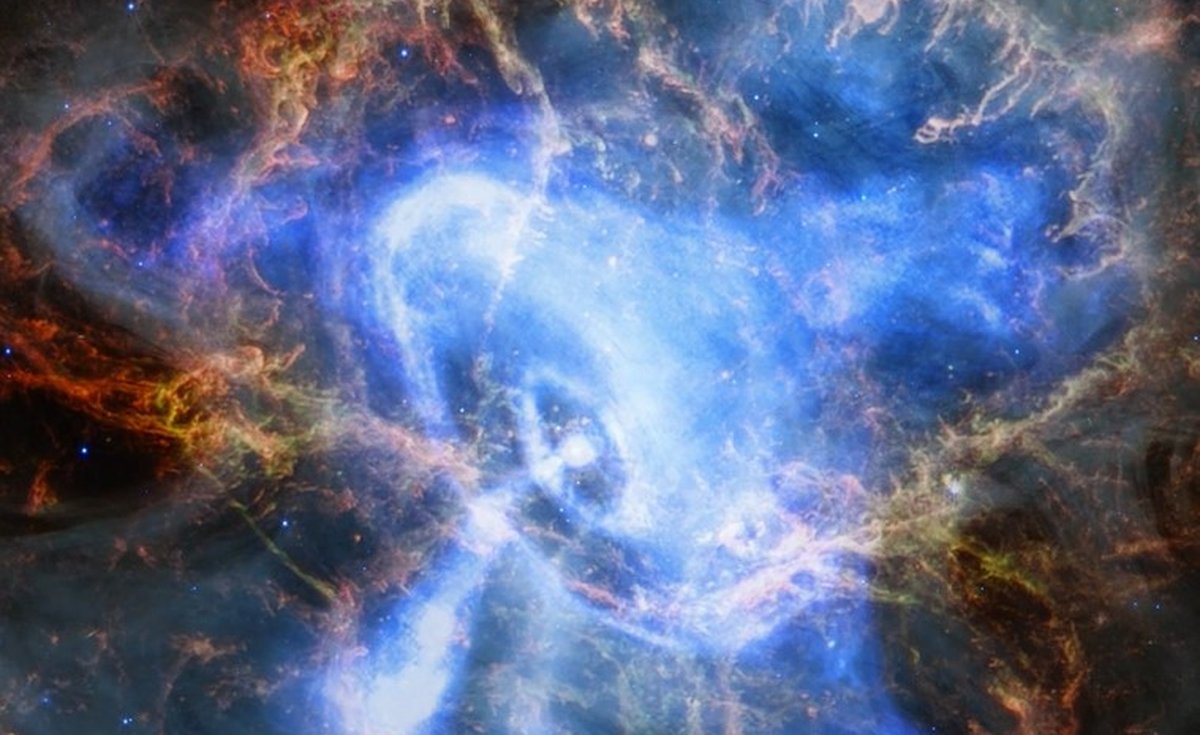Recently, the United States National Aeronautics and Space Administration (NASA) Videos presenting the history of two supernova remnants: Cassiopeia A (Cas A) and the Crab Nebula.
The space agency points out that it has been collecting data from both cosmic objects for about 20 years using the Chandra X-ray Observatory space telescope. Both videos show different changes in the radiation and rocks left after supernova explosions.
The Crab Nebula erupted almost a thousand years ago and is about 6,500 light-years from Earth; Observations of the object were reported by Chinese astronomers and other scientists in mid-1054. As a result of the chemical processes of the explosion, a pulsar was formed in the center of the nebula, pointing towards the Earth like a cosmic beacon..
Cassiopeia A is a relic that formed 340 years ago and is located 11 thousand light years away from our planet. From the data, scientists were able to observe that Cas A presented expanding shock waves caused by the explosion. There is also a neutron star in its core.
“These two movies, featuring supernova remnants Cassiopeia A and the Crab Nebula, demonstrate Chandra’s ability to document changes in astronomical objects over human time periods. Dramatic changes are clearly visible in the debris and radiation left after the explosion of these two massive stars in our galaxy. “These time-lapse movies would not be possible without the Chandra archives, which serve as a public repository for data collected over nearly 25 years of Chandra operations,” a NASA release explains.
Supernovae: 20 years in 20 seconds
In total, the Chandra mission observed the Crab Nebula for 22 years. In fact, this isn’t the first time-lapse video NASA has released about a cosmic object; The first showed some of the differences that occurred between 2000 and 2001.
Observations of Cassiopeia A have been made for approximately 19 years. Cas A was first detected in 1947, but was only detected by NASA in 1999 when the Chandra telescope was launched into space.
“Over the years, astronomers have used Chandra to discover evidence of a ‘superfluid’ inside the Cas A neutron star, revealing that the original massive star may have turned upside down when it exploded and taking a significant step in determining how this happened. giant stars are exploding. A. [missão] “Chandra also mapped the elements that form inside the star and move into space to seed new generations of stars and planets,” explains NASA.
Did you like the content? Stay up to date with more studies on astronomy at TecMundo. If you wish, take the opportunity to understand how telescope lenses contributed to the evolution of astronomy.
Source: Tec Mundo
I’m Blaine Morgan, an experienced journalist and writer with over 8 years of experience in the tech industry. My expertise lies in writing about technology news and trends, covering everything from cutting-edge gadgets to emerging software developments. I’ve written for several leading publications including Gadget Onus where I am an author.











